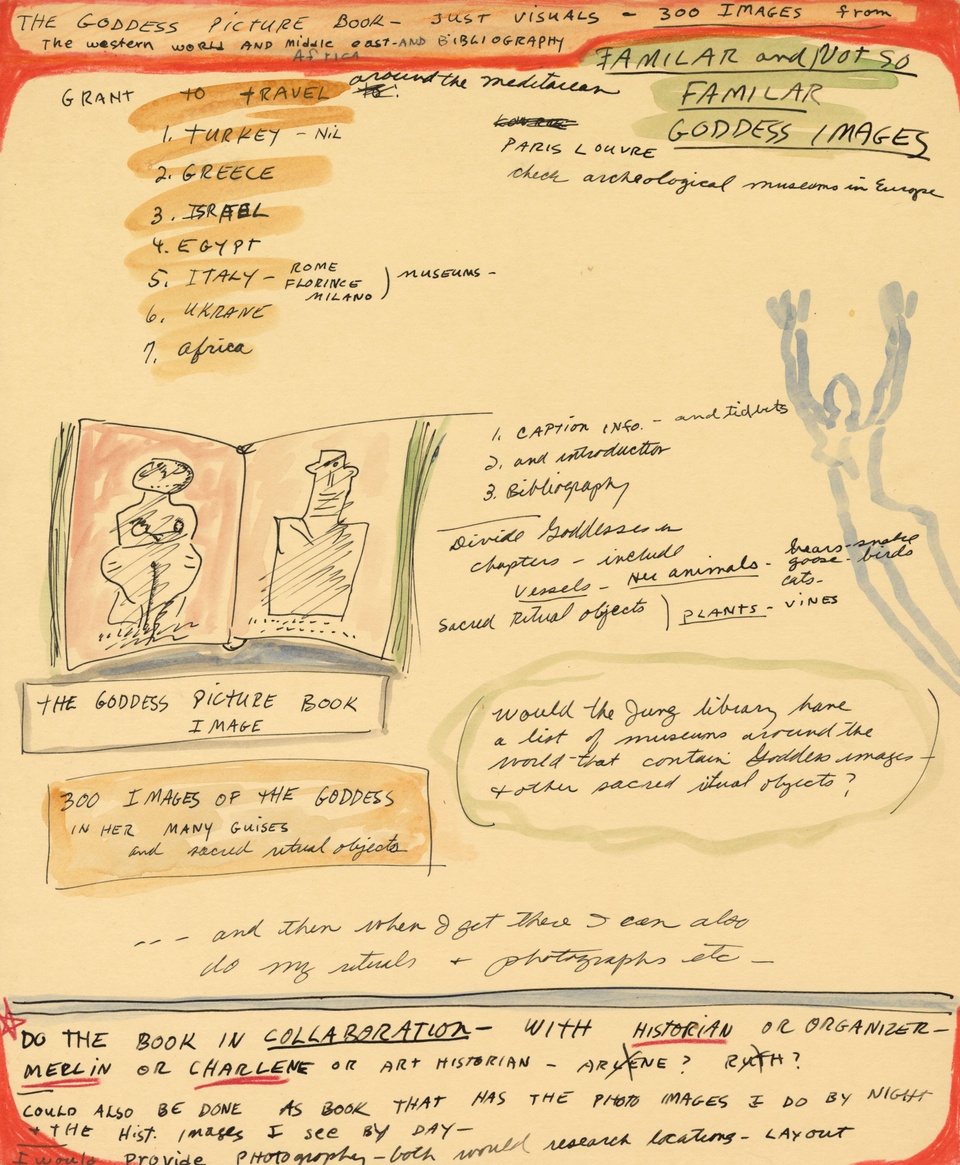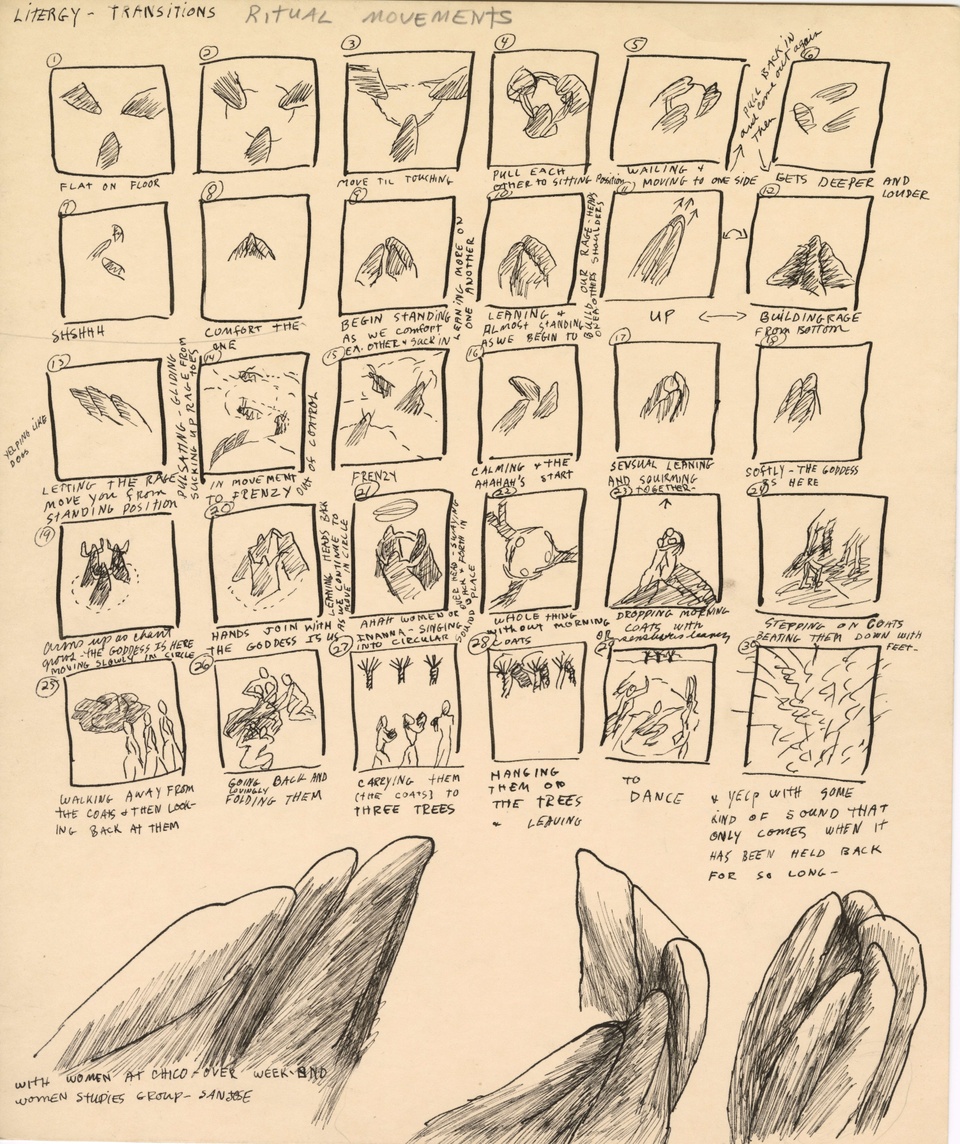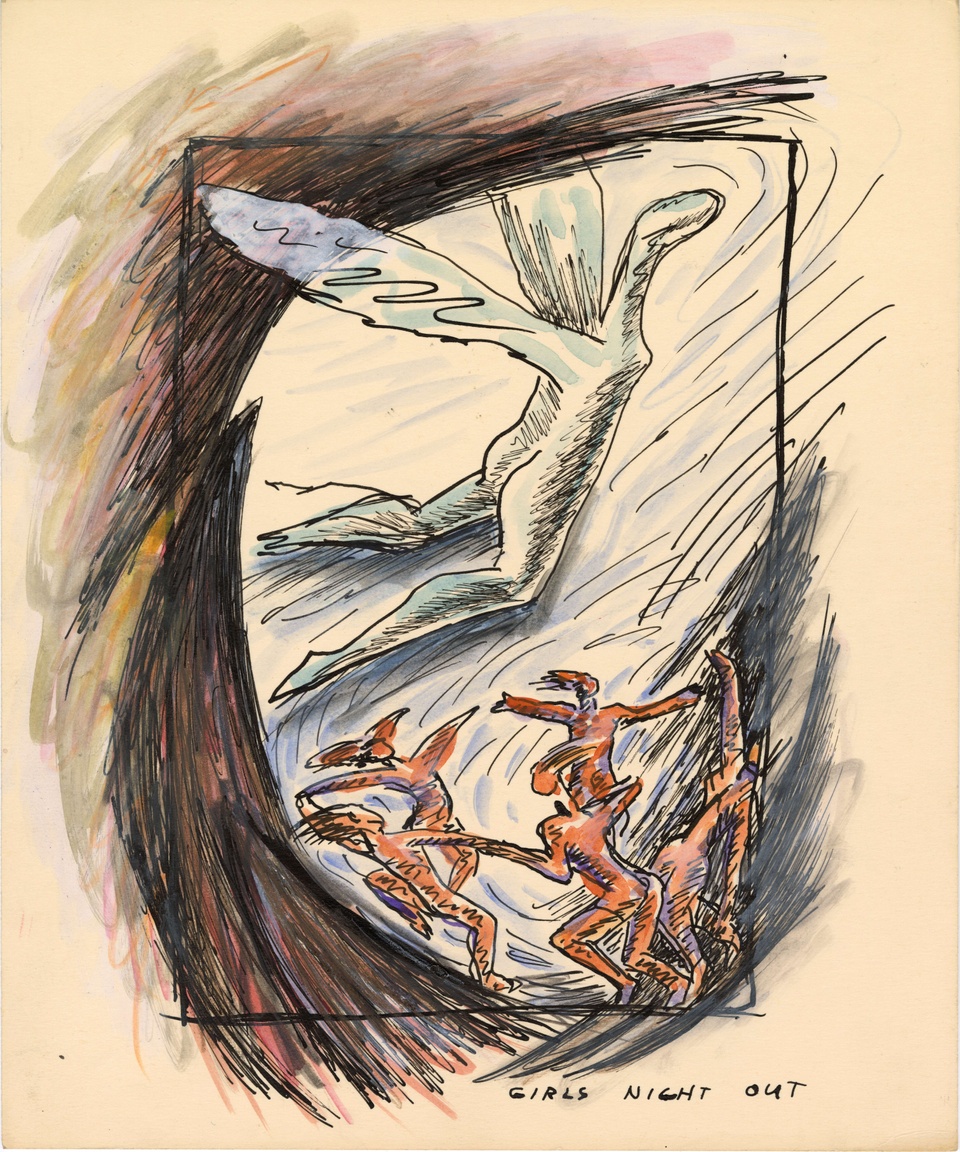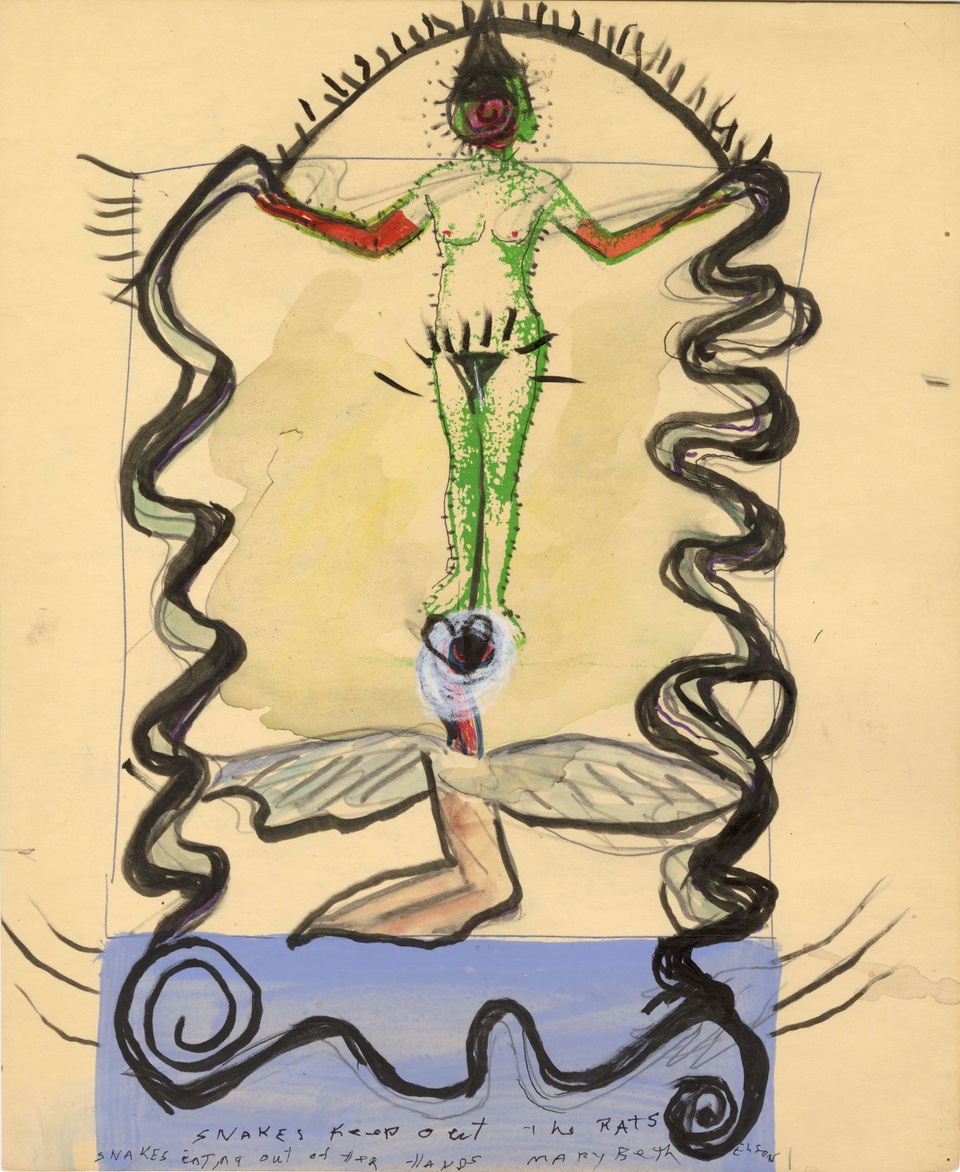Mary Beth Edelson: Small Paintings and Drawings with Various Themes
Kathleen Wentrack
Oct 24, 2019
Throughout her career Edelson made numerous small paintings and drawings with themes that connect to her other creative practices. Some of these examples include plans for projects such as the “Goddess Picture Book” concept from 1975 in which she outlines her plans to include “300 images of the Goddess in her many guises and sacred ritual objects.” This sketch also explains her ideas to perform rituals in locations to which she would travel and her wish to collaborate with an historian or art historian.
Other drawings are sketches for different works or performances such as “Liturgy Transitions: Ritual Movements” (1977). This lays out Edelson’s intentions, movements, actions, props, and sounds for group ritual performances with a note indicating that this was to be performed with women in Chico and women’s studies students in San Jose, both in California. Documents such as these highlight Edelson’s working process and intentions and form a vital part in the study and understanding of the artist’s work.
These three drawings are indicative of some of the musings found in the numerous small drawings in this 10 x 12-inch format that are rarely seen in exhibitions. “Girls Night Out” is a spirited and lively drawing of women dancing as a flying goddess looks on.
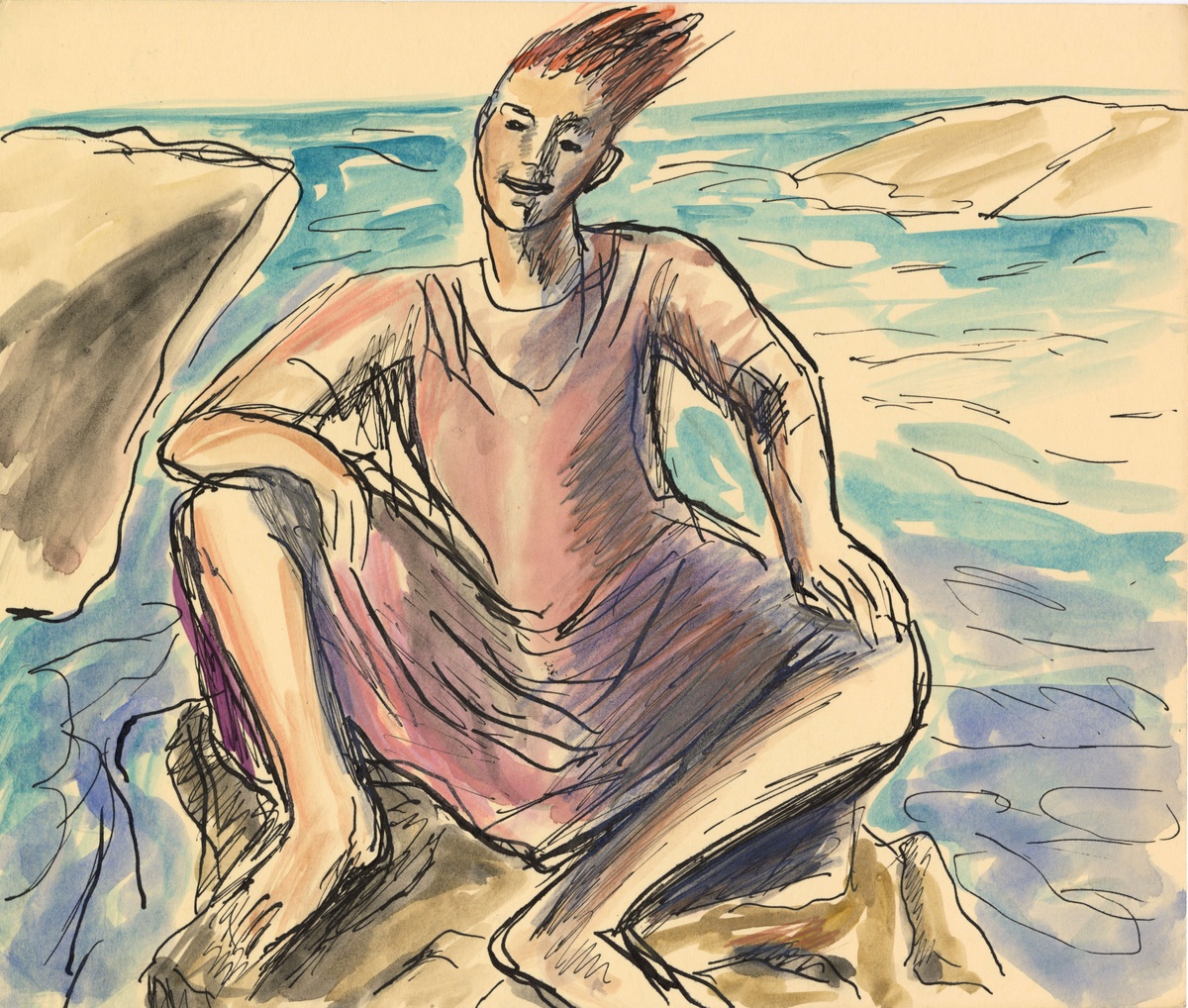
Copyright held by the Estate of Mary Beth Edelson; preserved through a partnership with The Feminist Institute. See record

Copyright held by the Estate of Mary Beth Edelson; preserved through a partnership with The Feminist Institute. See record
Baubo and Sheela-Na-Gig

Copyright held by the Estate of Mary Beth Edelson; preserved through a partnership with The Feminist Institute. See record
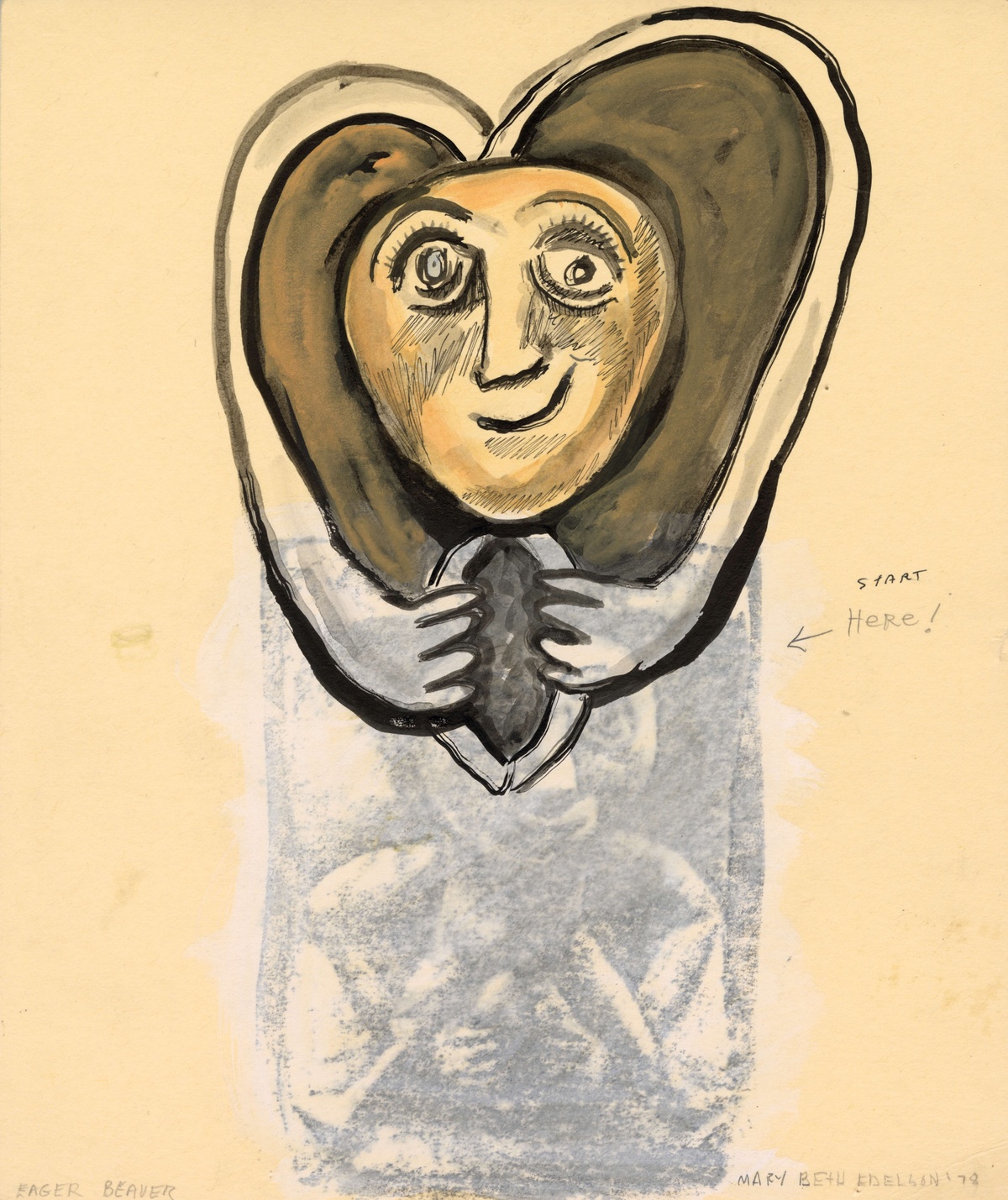
Copyright held by the Estate of Mary Beth Edelson; preserved through a partnership with The Feminist Institute. See record

Copyright held by the Estate of Mary Beth Edelson; preserved through a partnership with The Feminist Institute. See record
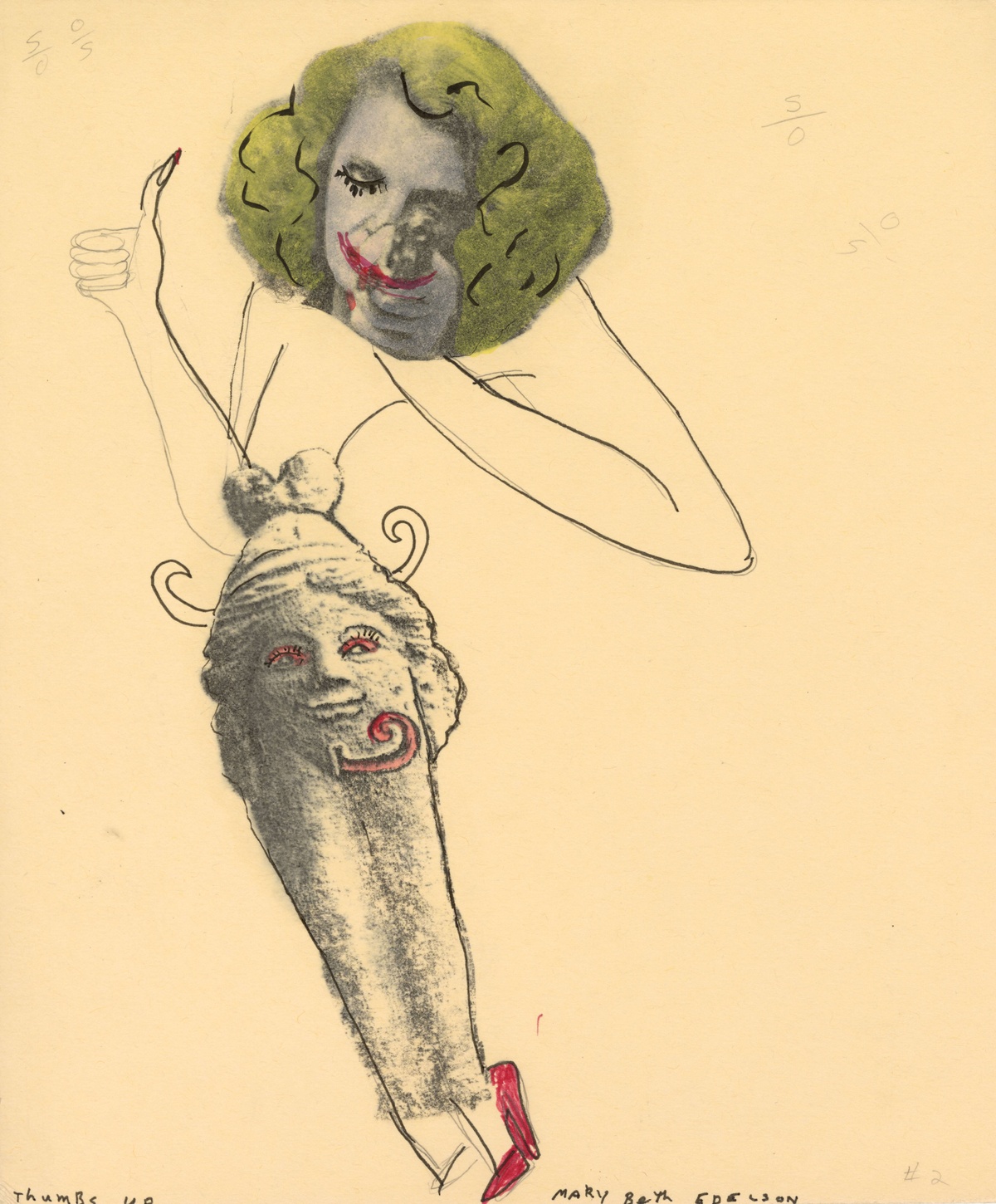
Copyright held by the Estate of Mary Beth Edelson; preserved through a partnership with The Feminist Institute. See record
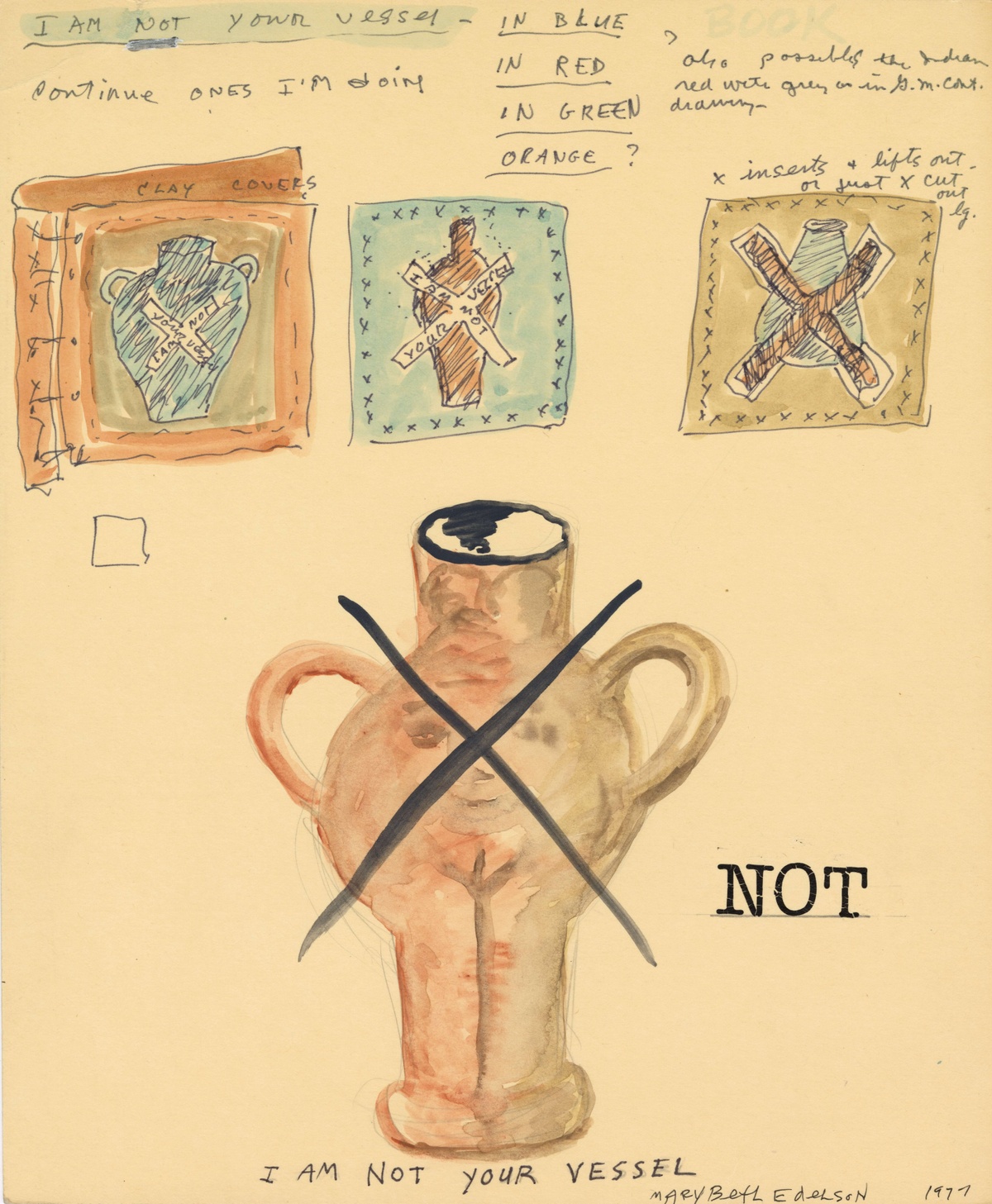
Copyright held by the Estate of Mary Beth Edelson; preserved through a partnership with The Feminist Institute. See record
Related items from the archive
Written by Dr. Kathleen Wentrack
© 2019 Kathleen Wentrack
Kathleen Wentrack, PhD, is a Professor of Art History at The City University of New York, Queensborough CC and the editor of the forthcoming book “Collaboration, Empowerment, Change: Women’s Art Collectives.” She recently published “1970s Feminist Practice as Heterotopian: The Stichting Vrouwen in de Beeldende Kunst and the Schule für kreativen Feminismus,” in “All Women Art Spaces in the Long 1970s” edited by Agata Jakubowska and Katy Deepwell (Liverpool University Press, 2018). She is a contributing editor to Art History Teaching Resources and Art History Pedagogy and Practice and a co-coordinator of The Feminist Art Project in New York City.
Produced by Erica Galluscio
Photography of studio space provided by Kolin Mendez Photography
Accola Griefen Fine Art exhibition photos courtesy of Accola Griefen Fine Art: Rob van Erve
Images of “Goddess Tribe” installation courtesy of David Lewis New York
Select Bibliography
Buszek, Maria Elena. “Mothers and Daughters, Sluts and Goddesses: Mary Beth Edelson and Annie Sprinkle.” In: It’s Time for Action (There’s No Option). About Feminism. Ed. Heike Munder. Zurich: Migros Museum für Gegenwartskunst and JRP/Ringier, 2007, 228-61.
Edelson, Mary Beth. The Art of Mary Beth Edelson. New York: Seven Cycles, 2002.
Edelson, Mary Beth. Firsthand: Photographs by Mary Beth Edelson, 1973-1993 and Shooter Series. Essay by Jan Avgikos, “No Reverse Gear.” Mary Beth Edelson: New York, 1993.
Edelson, Mary Beth. Interview with Kathleen Wentrack. New York, 12 September 2008.
Edelson, Mary Beth. “Male Grazing: An Open Letter to Thomas McEvilley.” In: Feminism-Art-Theory: An Anthology, 1968-2000.” Ed. Hilary Robinson. Oxford: Blackwell, 2001, 592-94. First published as “Objections of a ‘Goddess Artist:’ An open Letter to Thomas McEvilley.” New Art Examiner 16, No. 8 (April 1989): 34-38.
Edelson, Mary Beth. “Pilgrimage/See for Yourself: A Journey to a Neolithic Goddess Cave, 1977. Grapceva, Hvar Island Yugoslavia.” Heresies: A Feminist Publication of Art and Politics #5, Spring 1978: 96-99.
Edelson. Mary Beth. Seven Cycles: Public Rituals. With an Introduction by Lucy R. Lippard.” New York: Mary Beth Edelson, 1980.
Edelson. Mary Beth. Shape Shifter: Seven Mediums. New York: Mary Beth Edelson, 1990.
Edelson. Mary Beth. “Success Has 1,000 Mothers: Art and Activism from Mary Beth Edelson’s Point of View.” In: Women’s Culture in a New Era: A Feminist Revolution? Ed. Gayle Kimball. Lanham, Maryland: The Scarecrow Press, 2005, 27-60..
Freitag, Barbara. Sheela-Na-Gigs: Unraveling an Enigma. London: Routledge, 2004
Gimbutas, Marija. Gods and Goddess of Old Europe, 7000 to 3500 BC/Myths, Legends, and Cult Images. Berkeley: University of California Press, 1974.
Griefen, Kat. “Considering Mary Beth Edelson’s Some Living American Women Artists.” The Brooklyn Rail, March 2019, 38-9.
Höglinger, Nora. “Mary Beth Edelson: “The Goddess is Us.” In: Feminist Avant-Garde: Art of the 1970s, The Sammlung Verbund Collection, Vienna. Ed. Gabriele Schor. Munich: Prestel Verlag, 2016, 120-25.
Mesopotamian Gods and Goddesses. Ed. Vincent Hale and Vincent Croce. New York: Britannica Educational Publishing and Rosen Publishing Group, 2014.
Stone, Merlin. When God Was a Woman. New York: Dial Press, 1976.
Wack! Art and the Feminist Revolution. Ed. Lisa Gabrielle Mark. Los Angeles: The Museum of Contemporary Art, 2007.
Winifred Milius Lubell, The Metamorphosis of Baubo: Myths of Women’s Sexual Energy, Nashville and London: Vanderbilt University Press, 1994
